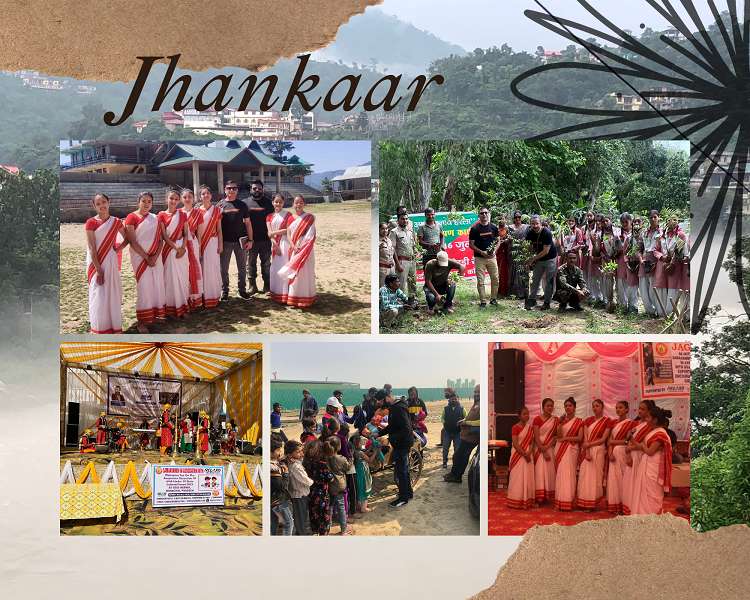JHANKAAR
JHANKAAR
SAMAARAMBH FOUNDATION wants to save heritage culture, artists & music that has been passed down from generation to generation within a particular culture or community. They are deeply rooted in the history, customs, and values of a society.
Music is the universal language that transcends boundaries, cultures, and emotions. It speaks to the soul, conveying feelings of joy, sorrow, love, and everything in between. From the rhythmic beats of drums to the melodious tunes of violins, music enchants and captivates us. It serves as a medium of expression, communication, and connection, bringing people together in harmony. It has the power to uplift spirits, evoke nostalgia, and inspire creativity. In its essence, music is the symphony of life, weaving its melodies through the fabric of humanity. Traditional music, often referred to as folk music or indigenous music, is the music that emerges organically from a community or culture, deeply rooted in the history, traditions, and social customs of the people who create and sustain it.
Artists are the architects of imagination, shaping worlds with their creativity. They paint with colors unseen, sculpt from dreams, and compose symphonies of emotion. In rural areas, artists and dancers are often at the heart of community life. They perform at local festivals, religious ceremonies, and social gatherings, infusing these events with color and vibrancy. Through their art, they preserve folk traditions, music, and dance forms that might otherwise be lost in the face of modernization and urbanization. These traditions are deeply rooted in the history and daily lives of the people, reflecting their relationship with the land, their struggles, and their joys. Rural artists and dancers are custodians of cultural heritage. They maintain and transmit the unique artistic practices of their region, ensuring that these traditions continue to thrive.
Despite their importance, rural artists and dancers face numerous challenges. Financial instability is a major issue, as opportunities for performance and income can be sporadic. Limited access to training and resources can hinder the development of their skills. Additionally, the encroachment of modern entertainment forms, such as television and the internet, can overshadow traditional practices, making it difficult to engage younger generations. Efforts to support these artists are essential. Government programs, non-governmental organizations, and community initiatives can provide financial aid, training, and platforms for performance. Documenting and promoting rural arts through digital media can also help bring wider recognition and appreciation.

Heritage culture is the tapestry of traditions, customs, and values passed down through generations. It embodies the essence of a community's identity, rooted in history and cherished as a legacy. From language and cuisine to rituals and art forms, heritage culture preserves the richness of a society's heritage. It serves as a bridge between the past and the present, connecting individuals to their roots and shaping their collective consciousness. Heritage culture fosters a sense of belonging and pride, fostering unity amidst diversity. It is a treasure trove of wisdom, offering insights into the values and beliefs that define a people's way of life. In rural areas is a rich tapestry of traditions, customs, and practices that have been passed down through generations.
It encompasses a wide range of elements including folklore, art, music, dance, rituals, festivals, and everyday practices that define the identity and way of life of rural communities. This cultural heritage is not only a source of pride and continuity for these communities but also a valuable resource for broader societal understanding and appreciation of human diversity. In rural areas, heritage culture is often preserved more robustly than in urban settings. The relative isolation of rural communities from the rapid changes of urbanization allows them to maintain traditional practices with fewer external influences. For example, agricultural rituals, traditional crafts, and local folklore remain integral to daily life. These practices are often intertwined with the natural environment and seasonal cycles, reflecting a deep connection between the community and their surroundings.
People are frequently asking some questions from us
When You Give, You Not Only Offer Resources but Also Open Doors to Opportunity, Education, and Empowerment for Those Less Fortunate
Learn how to get help1. Module of Samaarambh!
Step 1- REQUEST LETTERS Received from schools/ Administration
and
Villagers
Step 2- Prioritize requests based on URGENCY ,IMPACT & Number
of
Beneficiaries
Step 3- Site Visit and data collection of beneficiary
Step 4- Cost analysis of aid and project management
Step 5- Sharing project details with partner organisations
Step 6- Getting required approvals and Grants from
participating partners.
Step 7- Organising and Managing entire Event.
Step 8- Sharing completion report along with the Impact
derived.
